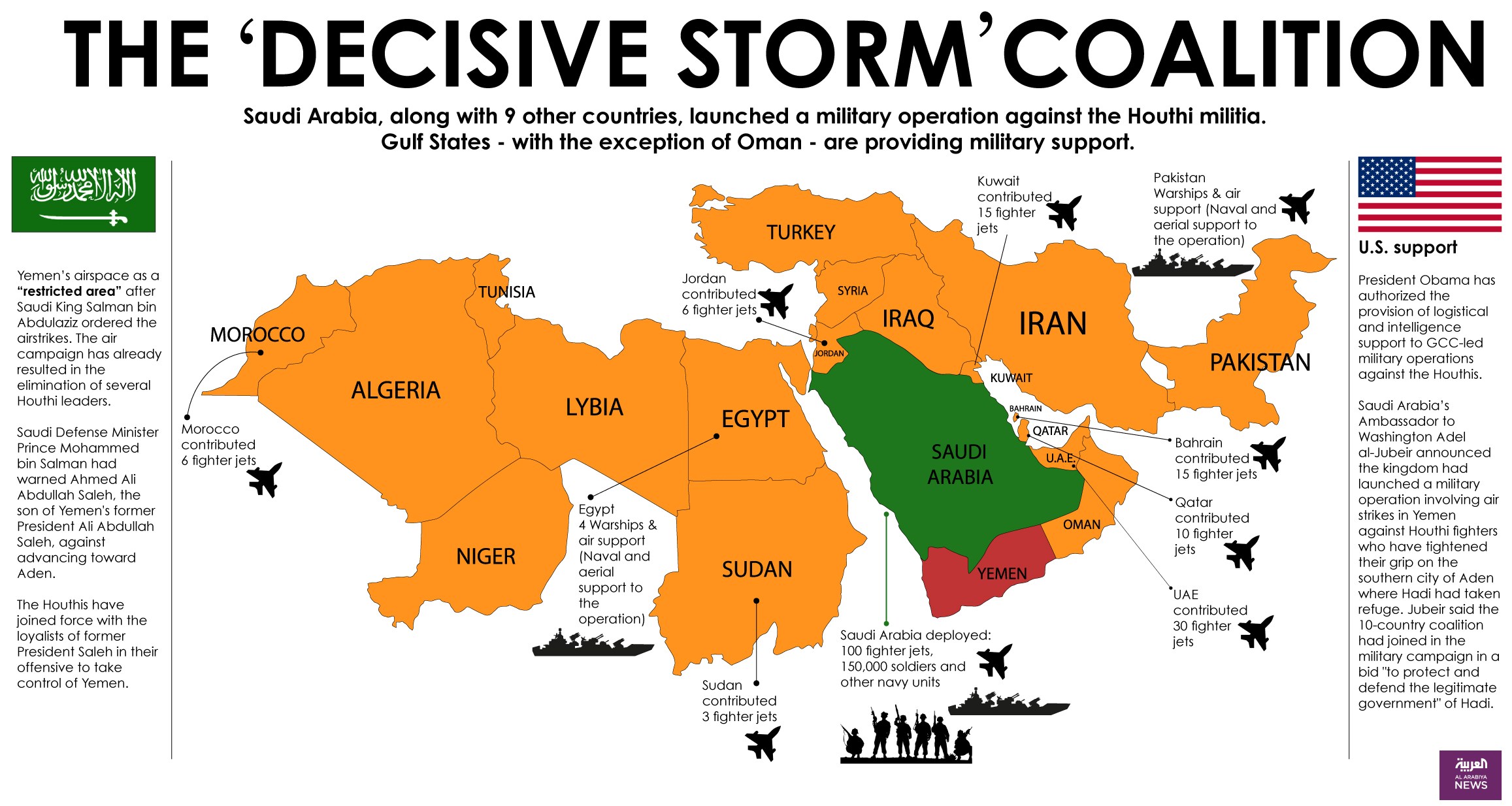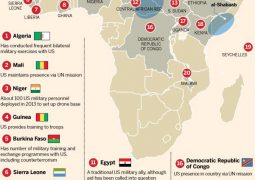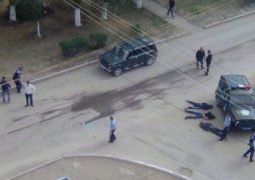Hundreds of thousands of land mines have stymied the Saudi-led forces in Yemen, and could pose a danger to civilians for decades to come.

By David D. Kirkpatrick
NEHIM, Yemen — Desperate to break through enemy lines, the Saudi-backed forces fighting in Yemen are sending untrained soldiers to clear minefields, sometimes using only their bayonets.
“I removed two and the third one exploded,” said Sultan Hamad, a 39-year-old Yemeni soldier who lost a leg clearing mines on the front line near Marib, an ancient city in central Yemen. He was among more than a half dozen soldiers waiting at a clinic in Marib to be fitted for prosthetic limbs.
Nearly four years after Saudi Arabia plunged into Yemen’s civil war, Saudi and Yemeni commanders say that hundreds of thousands of unmarked land mines planted by their opponents, the Houthis, have emerged as perhaps their most formidable defense.
The hidden explosives, the commanders say, have helped keep the conflict close to a standstill despite the superior air power and other resources of the Saudi-led coalition.
The mines have also killed as many as 920 civilians and wounded thousands, according to mine removal experts. Rights groups and other monitors say the minefields will leave Yemen riddled with buried explosives that could kill or maim unsuspecting civilians for decades before the devices can all be removed, as they have in Afghanistan, Colombia and Cambodia.
“The scale of the problem is exceptionally large, and the impact is horrendous,” said Loren Persi Vicentic of Landmine Monitor, an independent nonprofit group. “Most of the casualties we see reported are civilians.”
A Western mine-removal company hired by the Saudis estimates that the Houthis have laid more than a million mines, more than one for every 30 Yemenis and a concentration as high as that in any other country since World War II.

Crouching behind a low stone wall over the edge of a ridge in the district of Nehim on a recent overcast afternoon, Brig. Gen. Mohsen al-Khabi could almost make out the distant lights of Sanaa, the Houthi-controlled capital, just 23 miles away.
But those 23 miles might as well be 500, he said. The Houthis had planted so many land mines among the winding roads and scattered settlements of the valley, the advance of his Yemeni forces had all but ground to halt, stuck for three years in virtually the same position.
“The problem is the enemy’s inhumane weapons, the land mines and improvised explosives,” he said.
The Geneva Conventions prohibit the use of hidden mines and anti-personnel mines.
The Houthis, who control much of northern Yemen, did not respond to questions for this article. Despite the civilian casualties, Houthi officials have said that they use only anti-tank mines and only on battlefields, not mines triggered by human footsteps or in civilian areas.
“This is a war, so what do you expect us to do?” Brig. Gen. Yahia al-Sarie, a Houthi officer, told The Associated Press in December. “Receive the other side with flowers?
During a trip to Yemen last month arranged by the Saudi-led coalition, The New York Times examined scores of defused land mines and interviewed doctors, soldiers and victims about them.
Saudi Arabia may be eager to call attention to the Houthi mines to counterbalance allegations that the kingdom and its principal ally, the United Arab Emirates, have committed war crimes by conducting airstrikes that have killed thousands of civilians and imposing a partial blockade that has threatened Yemen with famine. Some of their airstrikes have dropped cluster munitions, which can pose a long-term threat similar to that of land mines.
But all or almost all of the land mines and other explosive devices buried in Yemen appear to have been planted by the Houthis, independent monitors say. Mining is a tactic typically employed by a military force defending territory or retreating from it, as the Houthis have been since the Saudi-led intervention began.

The Saudis also say the mines provide new evidence of Houthi ties to the kingdom’s regional rival, Iran.
Over the last four years, the Saudis have recovered several Houthi missile parts that Saudi and Western officials say came from Iran.
Now an independent group, Conflict Armament Research, has concluded that certain components of mines or similar victim-triggered bombs made by the Houthis also “originate in Iran.” The group’s report was financed in part by the United Arab Emirates but also by Western governments and the European Union.
Markings on many of the older mines recovered by the Saudi-backed forces indicate that they were manufactured in Russia or Eastern Europe. The Houthis, an armed movement based in northern Yemen, may have obtained those from the stockpiles of the former government in Sanaa, which the Houthis captured at the end of 2014.
But the Houthis also appear to have established factories to mass produce thousands of their own pie-shaped land mines, each with its own Arabic serial number, according to Conflict Armament Research and other experts. Mine removal teams have dubbed the locally made mines “Yemeni large,” at about 11 pounds, and “Yemeni small,” about 9 pounds.
On a visit to the district of Hairan, in the desert of northern Yemen, Saudi-backed Yemeni soldiers showed off what they said were Houthi land mines, some disguised as small boulders with hidden infrared motion detectors. Nearby was a heaping pile of what the soldiers said was more than 4,000 mines of the pie-shaped Yemeni variety that had been recovered over the previous two months.
The Houthis were “ carpeting the ground” with them, said Deif Ahmed Abdullah Saleh, a Yemeni army officer.
Saudi military officers said that the Houthis have also planted land mines inside Saudi Arabia, which may raise questions about the effectiveness of the kingdom’s border security.
The Houthis, said Brig. Gen. Faisal bin Yahia Hakami, the Saudi officer in charge of the border area around Jazan, “sneak inside the border of Saudi Arabia, they plant land mines and they run away.”
He said there were “a lot, a lot of military casualties inside the border.”
Last month, a Houthi mine blew up a family car inside Jazan province, killing a 10-year-old child, according to a Saudi military spokesman and Saudi news reports. Officials told the Saudi news agency that heavy rainfall had carried the mine across the border from Yemen.
Yemeni officers said their forces often had no better way to clear mines than prodding them with bayonets.
“This is due to lack of capabilities,” said Zeid al-Harissi, a Yemeni army officer. His forces lack modern mine detectors as well as people trained to use them, he said, adding, “Primitive methods are easy and fast to learn.”
Dr. Muhammad Abdo al-Qubati, who runs the facility, said that 90 percent of the limb-replacement patients were hit by land mines. He said the clinic had made more than 900 artificial limbs for more than 600 people over the previous year and a half.
“The mines are our problem, the reason for the miserable situation we are suffering,” he said.
Afif Jameel, a soldier from Taiz, a city in southwest Yemen, who said his age was about 21 or 22, said he was pitching a tent in captured territory when a land mine took off both his legs below the knees.
A boy named Saleh Raken, who gave his age as 10 but looked closer to 5, had been running with two playmates near his home in Baida, he said, when a land mine blew off his lower leg.
Saleh, who is unable to read, entertains himself by playing games on his brother’s cellphone, when it has enough battery power.
“I am bored,” he said, with a gaptoothed smile. “No one plays with me.”
Children like Saleh need to new artificial limbs every six months to accommodate their growth, the doctor said.
Saudi Arabia says it will spend $40 million on a program to teach Yemeni civilians state-of-the-art mine removal practices and to begin extracting mines from residential areas around Yemen.
The project’s manager, Ousama Algosaibi, said the project is a partnership with the British company Dynasafe, which had brought in experienced specialists from around the world. They had trained about 420 Yemenis, and the expatriates and Yemenis are now working in 32 teams around the country, including in Houthi-controlled areas.
“We do not take sides,” Mr. Algosaibi said.
Over seven months, he said, the teams have cleared about 41,000 mines, out of the estimated total of more than a million.
Many of their expatriate experts have moved from one conflict zone to another together for more than 15 years. In one group of veteran deminers working near Marib — from Bosnia, Kosovo, Croatia and two from South Africa — two had lost limbs in previous conflicts.
Saeed al-Batati contributed reporting.
- Previous Afghan, coalition forces kill 30 Taliban, ISIS-K militants in past 24 hours
- Next Is Turkey’s Economy in Recession? Three Gauges Say Yes










